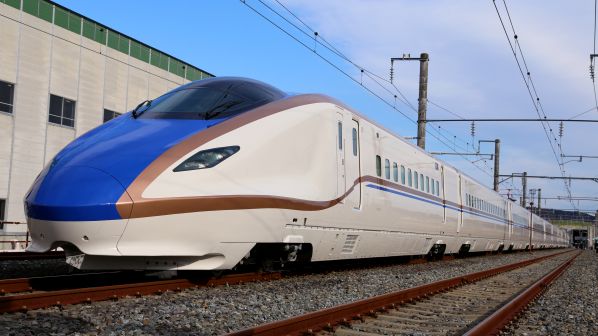The new system uses two rather than three wires, eliminating the traditional auxiliary catenary wire found in conventional compound overhead line equipment used on Shinkansen. The new system also replaces the conventional galvanised steel stranded wire used for the catenary wire with a high-strength but lightweight galvanised copper wire.
JR East worked with Japan’s Railway Technical Research Institute (RTRI) to develop the technology. JR East says the new system will improve operational reliability by reducing the number of components that require maintenance while increasing robustness.
While suitable for existing 320km/h operation, the new system is also viable at 360km/h through the use of a high-strength and low-weight contact wire. In these instances, the tension of the contact wire is increased to 53.9kN compared with 39.2kN on a conventional Shinkansen line. The higher tension ensures the wave generated as the pantograph passes along the contact wire moves faster than the train.
Rollout will begin this year on the Tohoku Shinkansen on a 45km stretch between Ueno and Omiya and the 160km section from Furukawa to Morioka. Installation is also earmarked for the 125km section of the Joetsu Shinkansen from Omiya to Honjo Waseda.
JR East says additional installations will be considered as ageing equipment requires replacement and on future driving needs on Shinkansen lines.

